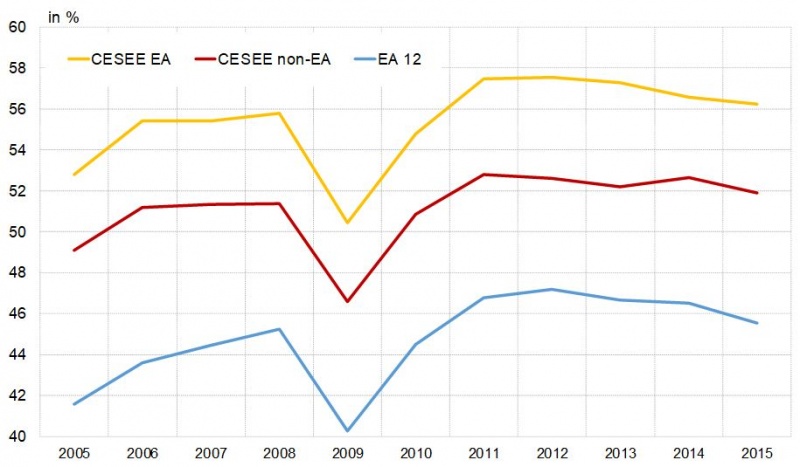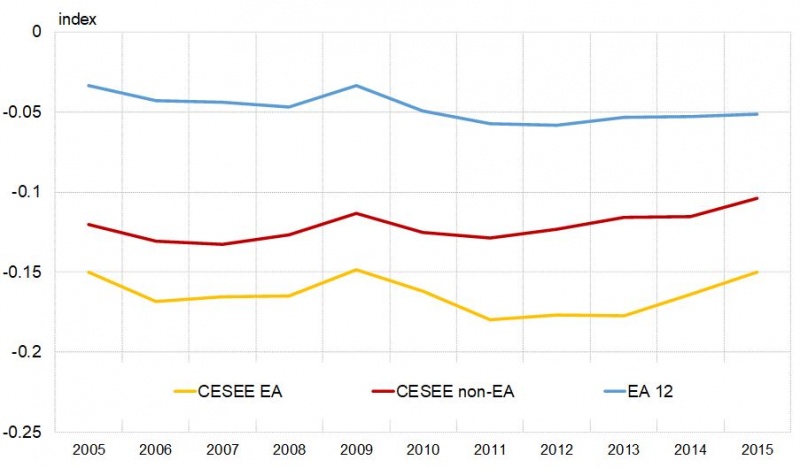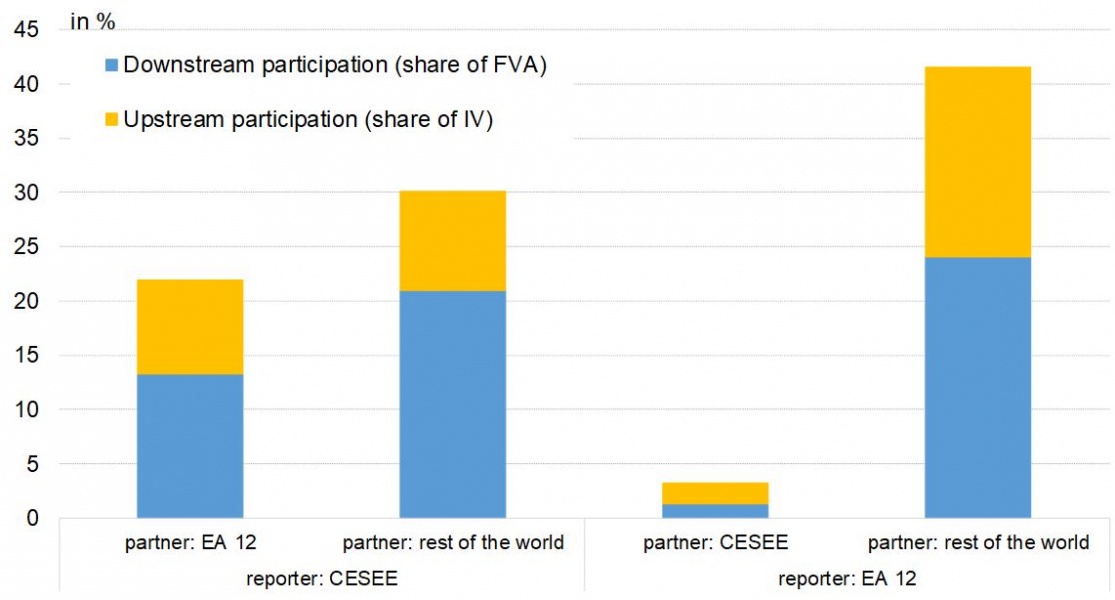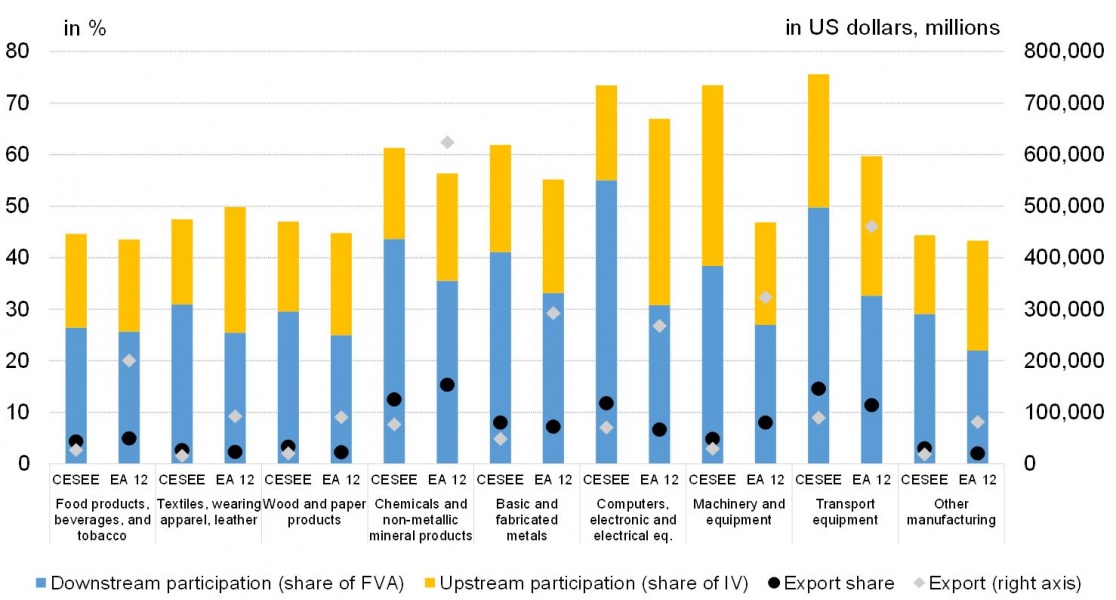References
Aslam, A., Novta, N., and Rodrigues-Bastos, F. (2017). Calculating trade in value added. IMF working paper, Paper No. WP/17/178. Available at: https://www.imf.org/en/Publications/WP/Issues/2017/07/31/Calculating-Trade-in-Value-Added-45114
Cappariello, R., Gunnella, V., Franco-Bedoya, S., and Ottaviano G. (2020). Rising protectionism and global value chains: quantifying the general equilibrium effects. ECB Working Paper Series, Paper No. 2360.
CEPII Database (2020). Available at: http://www.cepii.fr/cepii/en/bdd_modele/presentation.asp?id=8
Cigna, S., Gunnella, V., and Quaglietti, L. (2022). Global value chains: measurement, trends and drivers. ECB Occasional Paper Series, Paper No. 289.
De Backer, K. and Miroudot, S. (2013). Mapping Global Value Chains. OECD Trade Policy Papers, Paper No. 159.
ECB (2019). The impact of global value chains on the euro area economy. ECB Working Group on Global Value Chains, Occasional Paper Series, Paper No 221. Available at: https://www.ecb.europa.eu/pub/pdf/scpops/ecb.op221~38185e6936.en.pdf
Eurostat (2019). Glossary: High-tech classification of manufacturing industries. Available at: https://ec.europa.eu/eurostat/statistics-explained/index.php/Glossary:High-tech_classification_of_manufacturing_industries
Eurostat (2020). Database. Available at: https://ec.europa.eu/eurostat/data/database
Gunnella, V., Fidora, M., and Schmitz, M. (2017). The impact of global value chains on the macroeconomic analysis of the euro area. Economic Bulletin, Issue 8. Available at: https://www.ecb.europa.eu/pub/pdf/ecbu/eb201708.en.pdf?098fecf8c32c2fc25cc6c334adde0f91
Huidrom, R., Jovanovic, N., Mulas-Granados, C., Papi, L., Raei, F., Stavrev, E., Wingender, P. (2019). Trade Tensions, Global Value Chains, and Spillovers: Insights for Europe. International Monetary Fund, European Department Paper Series, Paper No. 19/10.
Ignatenko, A., Raei, F., and Mircheva, B. (2019). Global Value Chains: What are the Benefits and Why Do Countries Participate? IMF working paper, Paper No. WP/19/18.
Koopman, R., Wang, Z., and Wei, S.-J. (2014). Tracing Value-Added and Double Counting in Gross Exports. American Economic Review, 104 (2), 459–494.
TiVA Database (2019). Available at: https://www.oecd.org/sti/ind/measuring-trade-in-value-added.htm
UNCTAD (2020). Coronavirus outbreak has cost global value chains $50 billion in exports. Available at: https://unctad.org/en/pages/newsdetails.aspx?OriginalVersionID=2297
UNCTAD FDI (2020). Database on Foreign direct investment. Available at: https://unctadstat.unctad.org/wds/TableViewer/tableView.aspx?ReportId=96740
UNCTAD Bilateral FDI Statistics (2019). Available at: https://unctad.org/en/Pages/DIAE/FDI%20Statistics/FDI-Statistics-Bilateral.aspx
WIOD (2020). World Input-Output Database. Available at: http://www.wiod.org/home
WITS (2020). World Integrated Trade Solution database. Available at: https://wits.worldbank.org/CountryProfile/en/Country/WLD/Year/2018/TradeFlow/Export/Partner/by-country
WTO (2017). Measuring and Analyzing the Impact of GVCs on Economic Development. Global Value Chain Development Report. Available at: https://www.wto.org/english/res_e/publications_e/gvcd_report_17_e.htm
WTO (2019). Technological innovation, supply chain trade, and workers in a globalized world. Global Value Chain Development Report. Available at: https://www.wto.org/english/news_e/news19_e/publ_15apr19_e.htm
Žuk, P., Polgar, E. K., Savelin, L., del Hoyo, J. L. D., and König, P. (2018). Real convergence in central, eastern and south-eastern Europe. Economic Bulletin, Issue 3. Available at: https://www.ecb.europa.eu/pub/pdf/ecbu/eb201803.en.pdf







